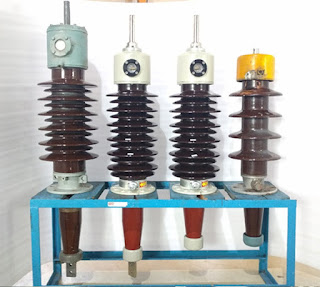Understanding Transformer Bushing: Construction, Operation, and Failures
Transformers are essential for effectively transporting and distributing electricity in the field of electrical engineering. The transformer bushing is one essential part of a transformer that frequently goes overlooked yet is extremely important. We examine the design, functionality, and potential faults of transformer bushings in this extensive manual.
Introduction to Transformer Bushings
Transformer bushings are crucial insulating parts that allow an electrical connection to be made between the high-voltage transformer components and the outside power lines. These bushings are essential to the entire performance of the transformer since they act as the vital link that promotes secure and effective energy transfer.
Construction of Transformer Bushings
In order to provide outstanding dielectric strength and electrical insulation, transformer bushings are often built using high-quality insulating materials. A transformer bushing is made up of a number of layers and parts:
- Core Material: Typically, porcelain or composite materials are used to create the core of a transformer bushing. While composite materials are lighter and more resistant to external factors than porcelain, which has high mechanical strength and thermal stability.
- Insulating Layers: Insulating layers surround the core to stop electrical leakage and guarantee that current only travels down the specified channel. These layers have been carefully engineered to withstand the intense electrical strains that occur during transformer operation.
- Conductive Components: Conductive elements, such conductive foils or metal pieces, are put strategically within the insulating layers. These parts make it easier to connect the transformer winding to the external circuit electrically.
- External Terminal: The transformer bushing's exterior terminal is connected to the outside power lines. It is made to endure a range of environmental factors, including potential mechanical stress.
Operation of Transformer Bushings
The performance of the transformer as a whole is directly correlated with the performance of the transformer bushings. The transformer bushings serve a critical function in ensuring a reliable connection between the internal and external components while electrical current passes through the transformer windings. Properly working bushings guarantee:
- Electrical Insulation: The insulating materials used in transformer bushings ensure that the high voltage inside the transformer remains isolated from the outside environment and prevent electrical leakage.
- Energy Transfer: Transformer bushings make it possible for electricity to flow continuously and without interruptions between the transformer and the power lines in an effective manner.
- Heat Dissipation: Transformer bushings are made to distribute heat produced during use, reducing overheating and preserving the transformer's durability.
Failures of Transformer Bushings
Transformer bushings play a crucial role, but they are prone to a number of faults that might affect the transformer's overall operation. Failures of transformer bushings frequently have the following causes:
- Aging and Deterioration: Insulating materials can age and deteriorate over time as a result of electrical stress exposure and environmental variables, which reduces their efficiency.
- Mechanical Stress: Transformer bushings' structural integrity may be compromised by external mechanical stress, such as vibrations or impacts, which could result in an electrical breakdown.
- Corrosion: Corrosion of the external terminal or conductive parts can impair the electrical connection and reduce the effectiveness of energy transfer.
- Faulty Design or Manufacturing: Transformer bushings that have been poorly designed or produced may have intrinsic flaws that show up when operating and lead to breakdowns.
To sum up, transformer bushings are essential parts that support the smooth operation of transformers. For power transmission systems to be reliable and effective, it is essential to understand how they are built, how they work, and how they could break down. Engineers and operators can increase the general performance and longevity of transformers by maintaining the calibre of the bushings, which will ultimately result in a more dependable and stable electrical grid.
.png)


Comments
Post a Comment